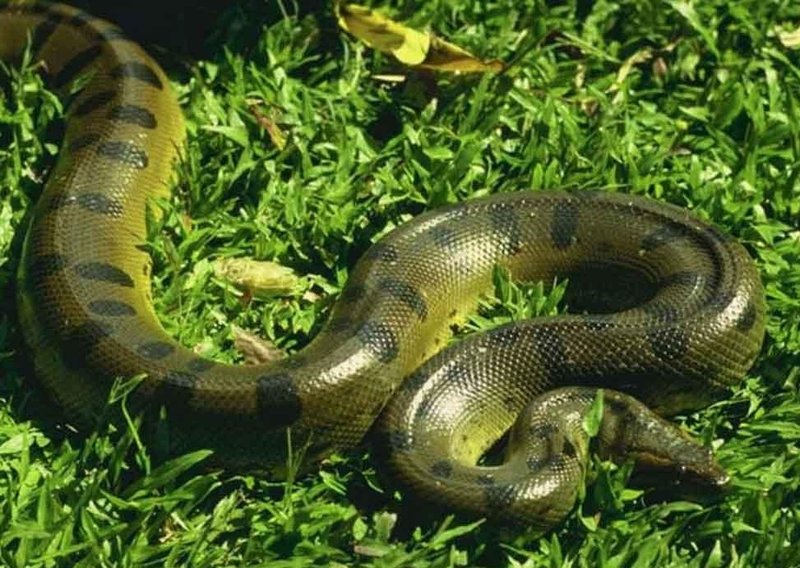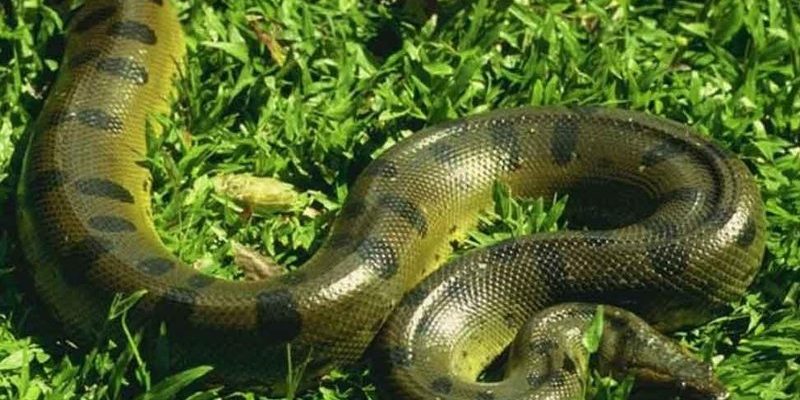
Green anacondas, known scientifically as *Eunectes murinus*, are capable of growing over 20 feet long, making them one of the largest snakes in the world. But don’t let their size fool you; they possess a delicate and intricate approach to mating. Understanding their reproductive behavior can help us appreciate not only these majestic creatures but also the environments they inhabit. So, let’s unravel the story of how these reptiles find love, mate, and ensure the survival of their young.
The Mating Season: When Love is in the Air
The mating season for green anacondas usually occurs during the rainy months, primarily from April to June. This is when the wetlands become abundant with life and resources, making it an ideal time for breeding. As the rains come pouring down, the hormones in these serpents surge, prompting them to seek out mates.
During this time, male green anacondas engage in a fascinating behavior known as “mating balls.” Imagine a swirling mass of snakes entwined with one another, each vying for the attention of a single female. It might sound like a chaotic dance, but it’s a natural display of competition where males will wrap around the female to assert dominance. The strongest male usually wins the chance to mate, showcasing the survival of the fittest in the animal kingdom.
In the wild, finding a mate can be challenging. The female often releases pheromones that attract males from various distances. Once a male arrives, he will try to impress the female by performing a series of gentle nudges and body movements, testing her receptivity. This all happens in a delicate balance of attraction and instinct.
How Do Green Anacondas Mate?
When a male green anaconda successfully gets the attention of a female, mating can finally begin. The actual process of copulation is quite unique. The male uses his hemipenes, which are paired reproductive organs, to transfer sperm to the female. You might be wondering, how does this happen?
The male positions himself alongside the female and aligns his body with hers. After some time of courting, he will insert one of his hemipenes into the female’s cloaca, which is the opening used for reproduction. This effective method allows for sperm transfer, ensuring the possibility of fertilization.
Mating can last several hours or even days, during which the couple remains closely intertwined. This prolonged connection increases the chances that the female will successfully conceive. After the mating period, the male usually departs, leaving the female to go through her pregnancy independently.
The Gestation Period: A Waiting Game
After successful mating, the female green anaconda undergoes a gestation period of about 6 to 7 months. During this time, the fertilized eggs develop inside her body. Interestingly, green anacondas are ovoviviparous, meaning they give birth to live young rather than laying eggs like many other reptiles.
As the months pass, the female’s belly swells, and you can almost feel the anticipation building. This is a crucial time for her as she needs to find a safe and suitable environment to give birth. Anacondas often seek out areas with plenty of water and cover, like marshes or riverbanks, to protect their young from potential predators.
The female will prepare for labor by finding a safe spot, but she won’t actively care for her offspring once they are born. It’s a bit of a harsh reality—once the young anacondas make their entrance into the world, they are on their own right from the start. This method of reproduction ensures that the species can thrive in the wild, as many will grow to be independent quickly.
Birth: A Dramatic Entrance
When the time finally arrives, the female green anaconda will give birth to anywhere from 20 to 40 live young. The birthing process can be quite dramatic, as she may experience contractions similar to those seen in mammals. You might imagine her coiled tightly as the young begin to emerge from her body, each snake measuring about 2 feet long at birth.
Once born, these tiny anacondas are fully functional. They swim away almost immediately, instinctively searching for food and shelter. Young anacondas will often feed on small fish and amphibians to survive. This independence from the start is crucial, as it reduces the amount of parental investment and increases their chances of survival in a world filled with predators.
It’s fascinating to think about how these little snakes must navigate their surroundings, learning quickly how to hunt and avoid danger. Nature has equipped them with the skills they need right from the moment they slither into the world.
Challenges in Reproduction
Despite their impressive adaptations, green anacondas face various challenges when it comes to reproduction. Habitat loss and environmental changes due to human activities are significant threats to their breeding success. As wetlands are drained or polluted, the availability of suitable mating and birthing sites decreases, putting pressure on their populations.
Moreover, predation plays a critical role in the survival of young anacondas. These little snakes must evade many predators, including birds, larger snakes, and even other mammals. The odds are stacked against them from the moment they are born, and this is why conservation efforts are essential to help maintain healthy populations in their natural habitats.
In addition to environmental challenges, mating can sometimes be tricky due to competition. During mating season, numerous males may compete for the attention of a single female. This can lead to aggressive interactions, which can be damaging or even deadly for individuals involved.
Breeding and reproductive behavior of the green anaconda is a captivating topic that highlights the intricate balance between survival and reproduction in nature. From their dramatic mating balls to the independence of their newborns, these snakes exhibit behaviors that are both fascinating and vital for their species. Understanding these aspects not only enriches our knowledge of green anacondas but also emphasizes the importance of protecting their habitats and ensuring their survival for generations to come.
As we continue to learn and appreciate the wondrous world of wildlife, it’s crucial to foster respect for the delicate ecosystems that support these incredible creatures. By raising awareness and taking action, we can help ensure that the green anaconda and other remarkable species thrive in their natural environments.

